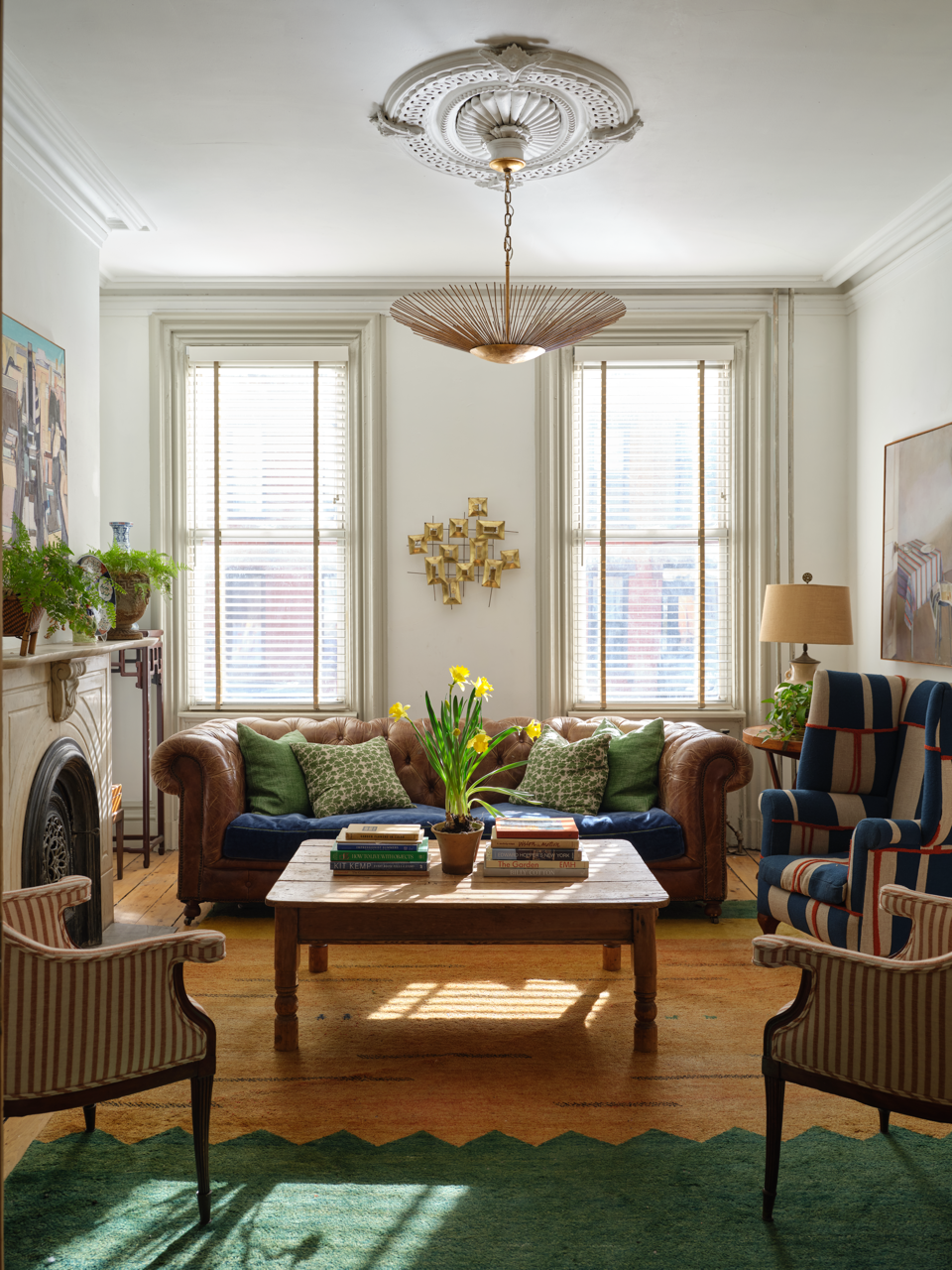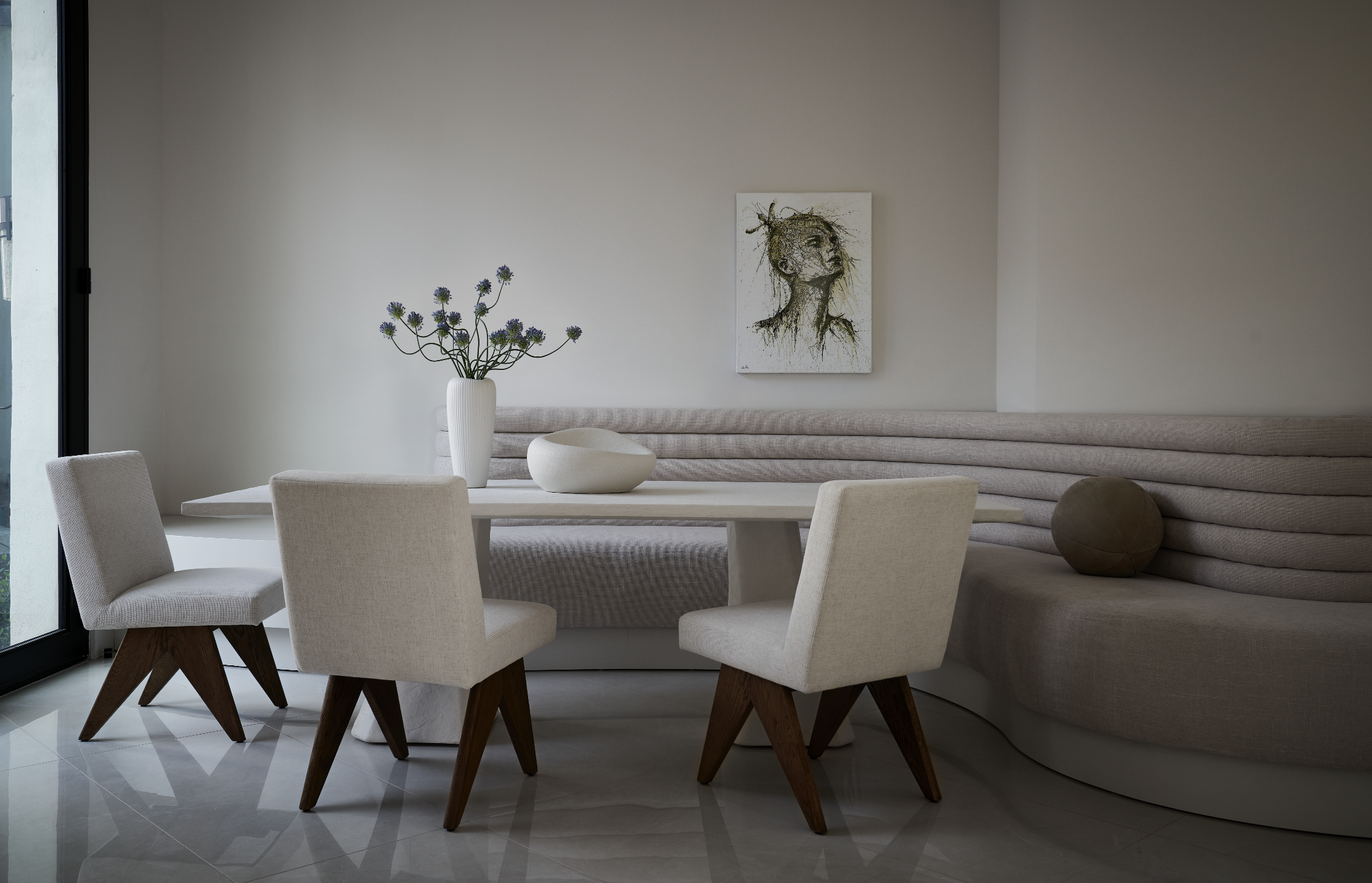
Building in the Missing Middle: Ulster House, Toronto, Ontario
www.canadianarchitect.com
The houses slightly canted form, clay shingle cladding, and abundant landscaping with native plants nod to the neighbourhood context of century-old brick homes.PROJECT Ulster House, Toronto, OntarioARCHITECT LGA Architectural PartnersPHOTOS Doublespace PhotographyWalking past the corner of Ulster and Lippincott, you might mistake the building tucked behind a mature, blue spruce for a thoughtfully designed three-storey single-family house in the neighbourhood. A relaxed garden spills over the edges of the property, alive with pollinators, giving the impression that its been there for yearsrooted and full of character. The house itself is contemporary yet quiet in its presence, woven into the Harbord Village fabric like a good neighbour: calm, gentle, and human.Despite its appearance, Ulster House is not a single-family homeits a five-plex, with two units sharing the upper floors, a ground floor unit, a laneway dwelling, and a basement apartment. It is the result of years of advocacy and experimentation, rethinking Torontos most ubiquitous housing typologythe single-family infill homeas a multi-unit urban dwelling. This small condominium is architects Janna Levitt and Dean Goodmans prototype for dense housing, done differently.Each unit in the development has its own front door. The two upper units, entered from Ulster Street, include private, open-air patios that are framed into the top level of the building.The imperative of good designUrban densification is no longer a choice, but a necessity. With rising populations, housing shortages, and our intensifying climate crisis, how we design our homes and communities is increasingly critical. Buildings account for over 40% of global carbon emissions, positioning architecture as both a major contributor to the problemand potential part of the solution.Designed by Levitt and Goodman, founding principals of LGA Architectural Partners, Ulster House is an example of this pursuit by individual architects to make a tangible impact. The project pioneers sustainable ways of living and sets a precedent for buildings to contribute positively at scales larger than their own footprint.PlansBuilding the missing middleAs a five-unit condominium, Ulster House addresses Torontos missing middlethe critical range of housing types between single-family homes and high-rises. This category, defined in the citys 2030 Housing Action Plan, is crucial for alleviating both the current housing crisis and the climate crisis. Its the middle ground where affordability and sustainability intersect, where families are not priced out. Ulster House revives the kind of multi-family housing that once defined this neighbourhood, where immigrant families would share homes and multi-generational living was the norm, creating a sense of belonging in the urban sprawl. Today, however, restrictive zoning laws and smaller family sizes dominate. Low-density single-family zoning covers 70% of Torontos buildable land. Ulster House disrupts that norm while continuing to offer an adaptable structure through simple stick-frame construction that allows renovation, change, and growth. It shows how families may stay rooted in their neighbourhood, even as their needs evolve.Architects Janna Levitt and Dean Goodman occupy the main floor unit and laneway suite as their residence.Serving as both their own home and a demonstration project, Ulster House builds on lessons from Levitt and Goodmans former residence. Their Euclid House (2006) tested compact footprints and flexible living options, and introduced Torontos first residential green roof. All architecture must contribute to good city-building, says Levitt. What youre doing has to add up to be bigger than the project itself. Goodman and Levitt are not only the designers, owners, and residents of Ulster Housethey are also the developers, shifting the paradigm of a ruthless profit-maximizing profession to one where the design decisions are driven by the ambitions of the owners as citizens.Ulster House harmonizes with the neighbourhoods existing scale while introducing density that feels human and livable. The handmade, electric-fired clay shingle cladding, warm to the eye, recalls the textures and tones of the surrounding brick. Sloped roofsdesigned to house photo-voltaics for an all-electric HVAC systemecho the homes around it, subtly reinforcing the communitys character. A layered landscaping of native plants and deadwood logs, designed by Lorraine Johnson and selected in accordance with permaculture principles, creates a biodiverse retreat amidst the urban fabric. A sumach screen offers a verdant alternative to the ubiquitous wood fence, softly defining private outdoor space.Each unit features a dedicated ground-floor entrance, connecting directly to the street. Large glass entry doors with transom windows, framed by vertical stained cedar planks, are sheltered by overhangs. This transparency fosters a sense of trust with the surrounding context, striking a delicate balance between privacy and connection.A trellis-covered courtyard with a sauna made from a reclaimed shipping container serves as a three-season outdoor extension of their living space.A courtyard at the heartThe architects currently occupy two of the unitsthe ground floor of the main home, which houses their kitchen and living spaces, and the laneway unit, almost bunkie-like, across a courtyard. Clad in Yakisugi (charred) cedar, the laneway house contains a bedroom, a bathroom, and a home studio that also functions as the library and guest room. Goodman and Levitts daily routine involves traversing the courtyard that connects their sleeping spaces with their living spacesa continual communion with the seasons. This experimental design tests the limits and possibilities of outdoor living in Torontos climate, where such a routine is otherwise uncommon. The stone walkway, nominally heat traced for winter, is sheltered by a wood trellis and clear acrylic covering, providing partial protection from the elements.An outdoor dining area connects the ground floor and laneway suite.In a recent interview, Egyptian architect Abdelwahed El-Wakil describes the courtyard as the open living room, and the soul of the house. He speaks of the courtyard as a kind of aperture, a soft-edged threshold that draws us back toward the natural world we have so distanced ourselves from. Reflecting on his own home in Agami, Egypt, centered around a courtyard with a small fountain and windcatcher, El-Wakil highlights the timeless principles of daylight, passive ventilation, and harmony with the sun we all share.The laneway suites bedroom adjoins the ground-floor courtyard.Despite the cold Canadian winters, Goodman and Levitt have always embraced these same principles. Walking through the courtyard, or looking out from the living and dining rooms in the main house immediately connects us to the seasons, the weather, and a landscape, shares Goodman, attributing their enhanced quality of life to a deepened relationship with nature. Its centering, and is the reciprocal element to the constructed world.The path between the two also serves as a three-season exterior workshop area and is lined on one side with a cedar storage wall containing, in part, Goodmans woodworking tools. A 10-foot shipping container, converted by Goodman into a sauna, provides warmth and purpose during colder months. The natural ventilation is luxurious, notes Levitt, when describing the sensation of air and light flowing through the home from the courtyard. Yet the integration of the courtyard offers more than such comforts. It embodies a philosophical shift: that our response to climate change must include a rethinking of human comfort, and of our relationship to nature.Meticulous detailing characterizes the project, including in the wood cladding throughout the laneway suite.The craft of compact livingFor the two upper units, open-to-sky outdoor terraces extend the buildings living areas, offloading interior functions while maintaining a sense of openness. These areas ease the compact footprints of the leasable units, inviting natural light and ventilation and reducing reliance on conditioned spaces. The buildings cohesive massing, unbroken by projecting balconies or expansive glass, maintains a robust enclosure, and retains its intimate residential character.The project as a whole is anchored by passive design principles and detailed studies of embodied and operational carbon emissions. The architects evaluated the Global Warming Potential (GWP) of the development against the Architecture2030 challenge, which calls for a 40% reduction in carbon emissions compared to industry standards. This analysis prompted key adjustments, including replacing steel framing with wood and decreasing the quantity of cement in concrete components. Such decisions reduced the buildings GWP by almost half, surpassing their targeted benchmark. For the architects, these results reinforced the value of integrating carbon accounting early in the design process.Perhaps most impactful is the overall concept of designing livable, efficient spaces within a compact footprint, reducing overall building materials and ongoing operational energy needs. Compact spaces require thoughtful design. The architects describe their material choices as elevated but pleasant to the touch, as is evident in the kitchen, where stainless steel countertops provide a tactile contrast to warm wood finishes that replace drywall to further reduce embodied emissions. The bunkie follows the same philosophy: wood throughout, with the exception of an elegantly crafted bathroom wrapped seamlessly with sea-green mosaic tiles.The tile-clad bathroom opens on to a pocket garden.Walking the walk: a precedent for urban livingMany of the outcomes of the Ulster House were hard-won, requiring the creation of a typology, advocacy for zoning variances, and adaptation to permitting requirements. The bunkies narrow pocket gardenthe result of laneway setback requirementsis just one example of how Levitt and Goodmans thoughtful design maximized even the most constrained possibilities.Aligning authorities and consultants with the vision took time, and delays were frequent. But each challenge only reinforced the architects belief that a different kind of housing was not only possible, but long overdue. Since the project was first proposed, changes to as of right conditions for small multi-unit buildings, development charges, and financing options (such as loans and lines of credit) have made buildings like Ulster House more feasible. However, legislation such as Bill 212, the removal of bike lanes, and the extended delays of the Eglinton Crosstown LRT, puts into question the provincial governments position on good city-building.Ulster House offers an exciting glimpse of what gentle densification might look like in our cities: an urban future that embraces creativity, sustainability, and a redefined connection to the natural world. For architects who continually push the boundaries of whats possible, a project like this becomes a living testament, showing skeptical clients an alternative, improved way of living. Ulster House sets a high bar, asking architects, city planners, and community members alike to think beyond their projects immediate footprints, and challenging us all to become better city builders.Jaliya Fonseka is the principal of Fonseka Studio and an Assistant Professor, Teaching Stream, at the University of Waterloo, where he teaches in the architecture and architectural engineering programs. He leads with community-oriented scholarship, investigating topics of home, belonging, and climate.CLIENTJanna Levitt and Dean Goodman | ARCHITECT TEAM Dean Goodman (MRAIC), Kara Burman, Andria Fong, Megan Cassidy, Joshua Giovinazzo | STRUCTURAL Blackwell Engineering | MECHANICAL/ELECTRICAL RDZ Engineers | LANDSCAPE Lorraine Johnson, Native Plant Consultant | INTERIORS LGA Architectural Partners | CIVIL Blue Grove Engineering Group Inc. | BUILDING ENVELOPE RDH | ACOUSTICS Thornton Tomasetti | CONTRACTOR Desar Construction Studio inc. | AREA 322 m2 (Condos) + 56 m2 (Laneway suite) | BUDGET $4 M | COMPLETION 2023As appeared in theFebruary 2025issue of Canadian Architect magazine The post Building in the Missing Middle: Ulster House, Toronto, Ontario appeared first on Canadian Architect.
0 Commentarii
·0 Distribuiri
·39 Views











